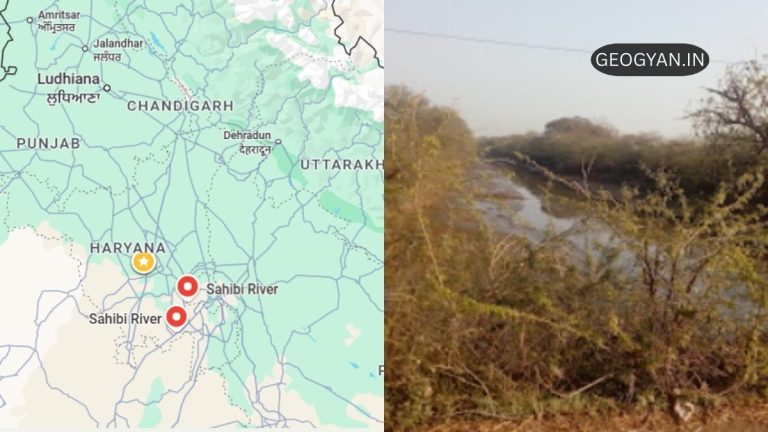Estimated reading time: 3 minutes

Table of contents
Why is the Dhauladhar Range in News?
Recently, the Dhauladhar Range in Himachal Pradesh has been in the news due to reports of increased snowline retreat linked to climate change and global warming. Scientists have also highlighted its significance as a water source for the Beas and Ravi rivers.
For aspirants, questions related to the this Range often appear in UPSC, State PCS, SSC, and defence exams, making this topic vital.
About the Dhauladhar Range
- This Range is a part of the Lesser Himalayas (Outer Himalayas).
- The word Dhauladhar means “The White Range” in Sanskrit (Dhaulya = white, Dhar = mountain ridge).
- It stretches for nearly 350 km and runs northwest to southeast.
- It is primarily located in Himachal Pradesh, but also extends towards Jammu & Kashmir and the foothills of Punjab.
Which is the Highest Peak in the Dhauladhar Range?
- The highest peak of the Range is Hanuman Tibba (5,639 m), near Manali.
- Other important peaks include Mun Peak and Indrahara Pass (4,342 m).
- The southern slope of the Dhauladhar rises abruptly from the Kangra Valley, creating a striking wall-like appearance.
Geographical Aspects of the Dhauladhar Range
- Altitude: 3,500–4,500 m (average), with snow-covered peaks.
- Rivers: The Beas, Ravi, and Chenab rivers originate or get water from glaciers in this range.
- Soil & Rocks: Predominantly granite and gneiss, supporting forest and grassland ecosystems.
- Climate: Alpine climate at higher altitudes; temperate climate in valleys like Kangra Valley.
Vegetation and Biodiversity of Dhauladhar Range
- Lower Slopes: Pine, Deodar, Oak forests.
- Higher Slopes: Alpine meadows, rhododendrons.
- Wildlife:
- Snow Leopard, Himalayan Black Bear, Leopard
- Birds like Himalayan Monal (state bird of Himachal Pradesh)
- Conservation Areas: Dhauladhar Wildlife Sanctuary, Kalatop Khajjiar Sanctuary (nearby Chamba region)
Exam-Related Quick Facts
- Dhauladhar Range → Lesser Himalayas (Outer Himalayas)
- Meaning of Name → “The White Range”
- Highest Peak → Hanuman Tibba (5,639 m)
- Pass → Indrahara Pass (4,342 m) connects Kangra with Chamba.
- Major Rivers → Beas, Ravi, Chenab tributaries.
- Important Valley → Kangra Valley.
FAQs
Q1. What is the Dhauladhar Range?
The Dhauladhar Range is a mountain range of the Lesser Himalayas in Himachal Pradesh, known for its snow-covered peaks and biodiversity.
Q2. Which is the highest peak of the Dhauladhar Range?
The highest peak is Hanuman Tibba (5,639 m).
Q3. Which valley lies south of the Dhauladhar Range?
The Kangra Valley lies to the south, famous for its fertile soil and scenic beauty.
Q4. Why is the Dhauladhar Range important?
It is important for river systems (Beas, Ravi), biodiversity conservation, climate studies, and tourism in Himachal Pradesh.
Q5. What does the word ‘Dhauladhar’ mean?
It means “The White Range”, derived from Sanskrit.





























